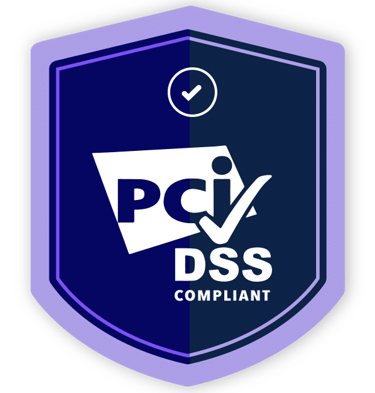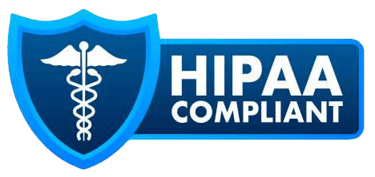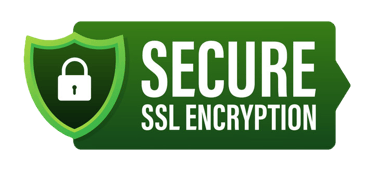Hospice Compliance Checklist: How to Stay Survey-Ready Year-Round
Stay survey-ready year-round with a robust hospice compliance checklist. Learn how HealthBridge’s “Ongoing Compliance Program” supports continuous readiness and regulatory alignment.
Hospice care is mission-driven, but it exists in a highly regulated environment. With increased scrutiny from regulators, payers, and accrediting bodies, hospice organizations can’t afford to treat compliance as episodic. Survey readiness must be woven into the day-to-day operations. Below is a comprehensive compliance checklist and a practical framework to help your agency stay audit-ready all year. We also explain how HealthBridge’s Ongoing Compliance Program can support you in making continuous readiness a reality.
Why “Always Survey-Ready” Matters
Before diving into the checklist, it’s helpful to understand the stakes:
Heightened regulatory scrutiny: Hospice providers are under increasing pressure around documentation, eligibility, billing integrity, and program integrity.
Financial penalties: Failure to comply with the Hospice Quality Reporting Program (HQRP) can lead to a reduction in Medicare updates (currently a 4% penalty for noncompliance).
Audits and recoupments: CMS and OIG audits of medical records, billing, and eligibility are common, and noncompliance findings can lead to recoupments or sanctions.
Accreditation and reputation: Accrediting bodies and referral sources expect a hospice to demonstrate continuous compliance and quality.
Mitigating risk: A documented, effective compliance program is a mitigator in enforcement cases, per OIG guidance.
Given these dynamics, a proactive, systematized approach is needed. The following checklist is organized around critical domains of risk and oversight.
This checklist is intentionally thorough. It should be adapted to your state requirements, accrediting bodies, and agency-specific risks.
Turning a Checklist Into a Culture: Best Practices
Having a checklist is necessary but not sufficient. Here’s how to make it work in practice:
1. Risk-Based Prioritization
Instead of focusing equally on all areas, weight your compliance efforts toward higher risk domains—eligibility, billing, documentation, and vendor relationships. Use your internal audits and past deficiency history to adjust audit frequency and depth.
2. Cascade Accountability
Governance, leadership, compliance officers, and front-line staff must all own part of the compliance mission. Define roles, responsibilities, escalation paths, and performance expectations.
3. Real-Time Monitoring & Dashboards
Instead of waiting for quarterly reviews, set up real-time or monthly dashboards tracking key compliance metrics (e.g. audit error rates, missing documentation, training completion). Early warning is your ally.
4. Continuous Education & Refreshers
Compliance is dynamic. Use targeted microlearning, monthly bulletins, and “compliance moments” during team huddles to keep awareness high.
5. Mock Surveys & Drill Rigor
Simulate surveys realistically. Use external or cross-department teams to find weak spots. Validate that staff can articulate policies, find documents, and respond to tracer questions.
6. Root Cause Discipline
When deficiencies occur, go beyond superficial fixes. Use root-cause tools (e.g. fishbone, 5 whys) to address systemic issues—not just symptom relief.
7. Documentation of Everything
If it isn’t documented, it didn’t happen—at least from a regulatory perspective. Maintain logs, tracking tools, evidence files, resolution logs, and regular archiving.
8. Adaptive Compliance as Regulation Changes
Stay alert to CMS, OIG, accreditor, and state rule changes. Integrate regulatory updates into your compliance program and adjust the checklist accordingly.
How HealthBridge’s Ongoing Compliance Program Keeps You Ready “Every Day”
Building and sustaining this level of compliance discipline can be daunting across busy operations. That’s where HealthBridge’s Ongoing Compliance Program can add real value. Here’s what it brings to your hospice agency:
Core Services Offered by HealthBridge
Administrative compliance support: complete QAPI reports, infection control, emergency management, governance minutes, and more
Ready-to-use, CMS-compliant documentation: forms, policies, HR files, and agency tools tailored for hospice and home health agencies
Survey readiness and preparation: mock survey, gap analysis, action planning support
Regulatory updates and alerts: synthesized industry changes so you don’t have to scour multiple sources
Transparent, monthly pricing: no hidden fees, cancel anytime — designed for aligning with your agency’s budget cycles.
Steps to Launch (or Enhance) an Ongoing Compliance Program
If you’re considering elevating or launching an ongoing compliance approach, follow these steps:
Baseline Assessment / Gap Analysis
Use the checklist above to self-audit your current state. Identify key deficiencies or high-risk areas. (You might even use a published self-assessment tool. Hospice Fundamentals)Define Controls, Metrics & Dashboards
For each domain, set measurable KPIs (e.g. audit error rate, training completion, missing documents). Build your compliance dashboard.Governance & Escalation Structure
Ensure you have a compliance officer, committee, and regular board reporting. Define escalation thresholds for recurring or serious findings.Staff Training & Awareness Launch
Roll out training on the new compliance program, communicate expectations, and schedule refreshers.Mock Surveys & Readiness Testing
Perform an initial mock survey. Use findings to refine processes and checklist priorities.Integrate with Daily Operations
Embed compliance checks into daily workflows (e.g. chart review at point of care, real-time audit flags).Engage External Support as Needed
Whether via HealthBridge or other consultants, consider outsourcing parts of compliance to provide continuity, reduce risk, and relieve internal burden.Continuous Improvement Loop
Routinely reassess: audit results, deficiency trends, regulatory changes, and adjust your checklist, education, and audit focus accordingly.
Common Pitfalls & How to Avoid Them
Treating compliance as “audit prep only”
When compliance is only activated near surveys, gaps accumulate. The goal is to operationalize compliance daily.Paper checklists with poor follow-up
A checklist without enforcement, tracking, and remediation is merely decoration. Use your dashboard to measure closure and recurrence.Lack of senior leadership buy-in
Compliance won’t stick if leadership treats it as a nuisance. Elevate it as a strategic priority.Under-documentation of compliance efforts
Your compliance efforts must be documented to demonstrate effectiveness to surveyors and auditors.Neglecting updates / regulatory change
The regulatory landscape evolves; your compliance program must evolve with it.One-size-fits-all training
Different roles face different risks. Tailor training appropriately to clinical, administrative, leadership or business development roles.
Looking Ahead: Compliance Trends in Hospice
Stricter oversight & enforcement: Regulators are applying increased scrutiny over hospice eligibility, billing practices, and marketing.
Public quality transparency: As HQRP data is publicly available via Care Compare, reputational risk is growing.
Risk-based auditing by CMS/OIG: Expect deeper dives into high-utilization patients, GIP care, and outlier billing.
Greater expectation of proactive compliance programs: Agencies with strong, documented programs will be better positioned to mitigate scrutiny or enforcement actions.
These trends make it more imperative than ever that compliance is not an afterthought but a core operating function.
Conclusion
Navigating the complex, evolving compliance landscape in hospice care is no small feat. But by adopting a structured, risk-based compliance checklist and embedding continuous monitoring, audits, remediation, and education into your daily operations, your organization can maintain readiness year-round.
HealthBridge’s Ongoing Compliance Program offers a valuable partner in that journey—providing administrative support, documentation, mock survey capabilities, regulatory updates, and more—so your internal team can stay focused on care rather than chasing paperwork.
Embrace the mindset that compliance is not a periodic project but a living discipline. With that perspective and the right tools in place, your hospice can face surveys, audits, and regulatory changes confidently—and continue delivering compassionate care with integrity.
If you like, I can also provide you with a downloadable, branded version of the checklist above or a suggested compliance calendar you can upload to your internal portal. Would you like that?







